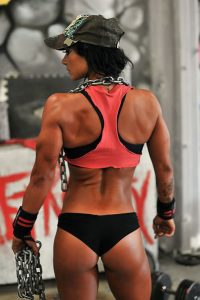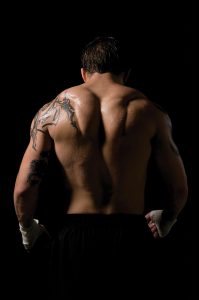Your back comprises some of the strongest and largest muscles in your upper body. Executing your pulling movements properly will help you target these muscles which in turn will improve your posture negating the slouched over desk look giving you that lean look. Furthermore, if you’re eating your way to become a silver-back gorilla, learning to feel your back work during these movements will go a long way to making your back as big as a barn door. A strong, wide back speaks power and is the base in which all your other movements are founded upon. E.g. heavy squats, pressing, lunging, throwing, punching, sprinting all require strong backs for a high level of performance. Below are my 4 favourite cues when teaching pulling movements (specifically rows) to athletes and clients.


Both backs built with similar movements and being able to create that “mind-muscle” connection. Doesn’t matter if you are male or female, if you want that look you need to be able to feel your back during pulling movements.
“Hands like hooks”
It’s very easy to notice glaring weaknesses in someone’s back just by watching their hands when they row. When people are trying to get that extra range of motion in their row, their hands will curl up into a wrist curl rather than shoulder blades coming together. It is important to relax your hands to allow you to focus on contracting the muscles in your back.
“Pull with elbows not hands”
This follows on from the hands like hooks cue. Focus on pulling your elbows past your ribs rather than pulling with your hands. This allows you to emphasise a stronger muscular contraction in your back rather than your forearms taking over the movement.
“Pinch my fingers”
This is a cue I use when working in person with an athlete/client. Having the person focus on their shoulder blades moving rather than the weight itself helps them feel the movement in their back rather than their arms. Putting my fingers in-between their shoulder blades gives a tactile stimulus to facilitate shoulder blades going “forward then back and down” when performing the row.
“Shoulder go forward and back and down”
Following on from above, the shoulder blades move in conjunction with the arms through protraction/retraction and upwards/downwards rotation. The old cue of keeping your shoulder blades pinned back (retracted) during all rowing movements I feel was an overreaction to the fact most people are so weak in getting shoulder blade retraction. You are better off allowing free movement of the shoulder blades with the arms to reinforce proper shoulder movement keeping them strong and healthy. In addition, having your shoulders come forward facilitates a greater range of motion and stretch promoting a greater overall training effect.
Try these cues on yourself or your training partner next time you’re in the gym and let us know if you can feel the difference!
